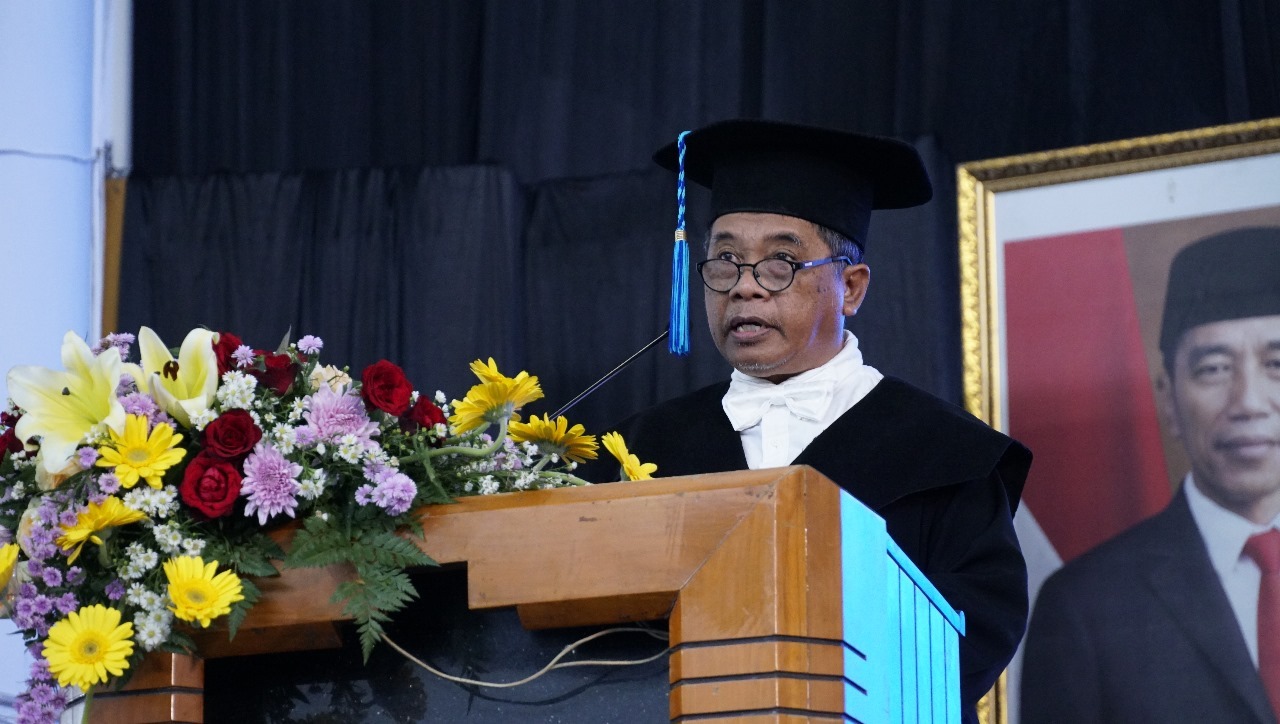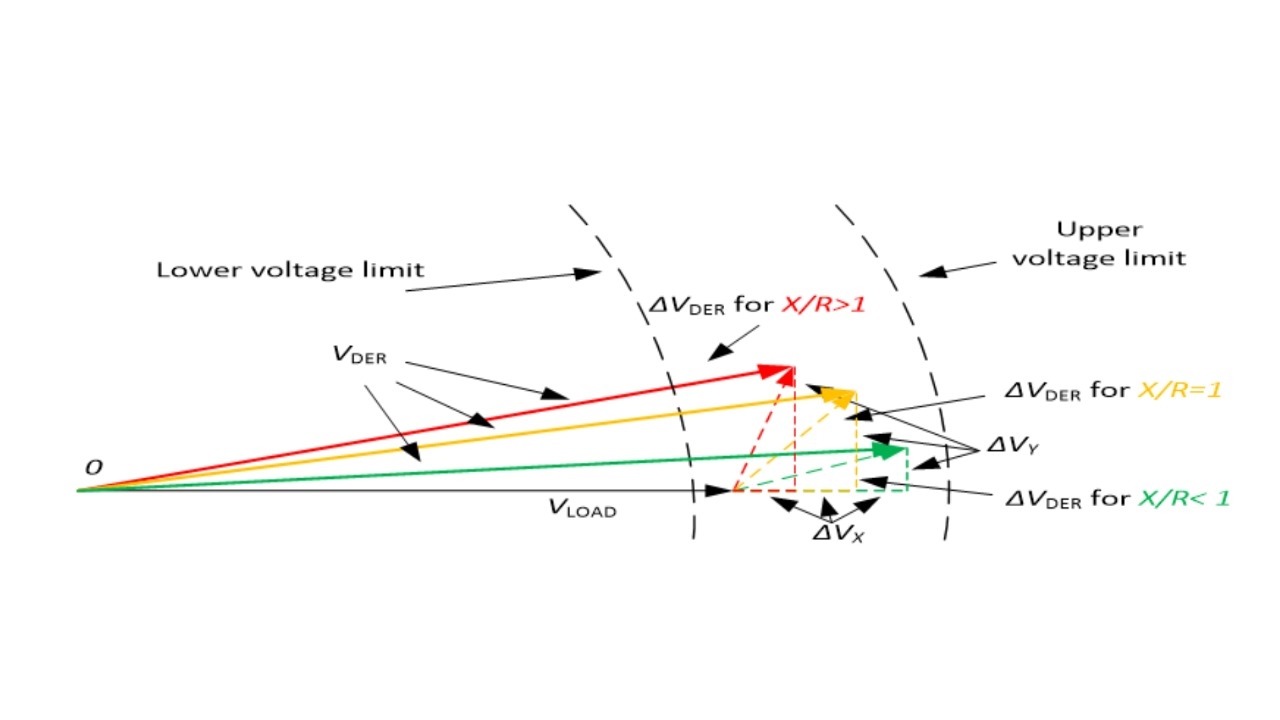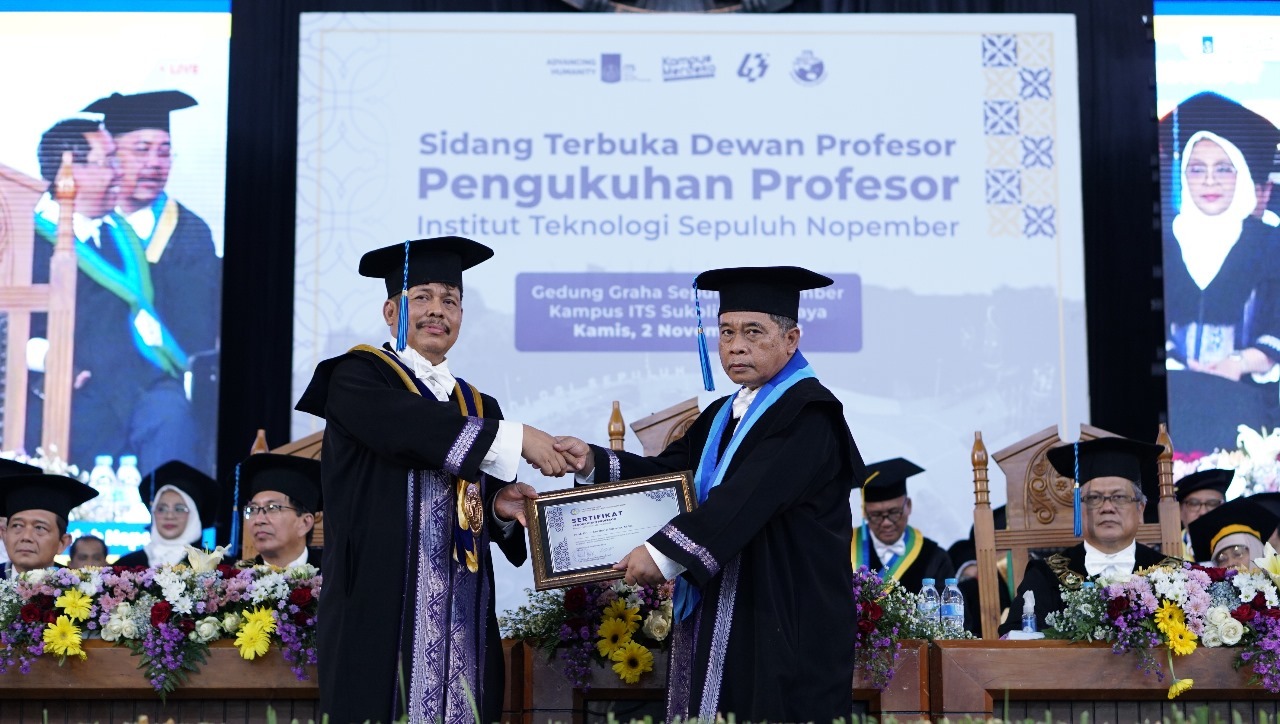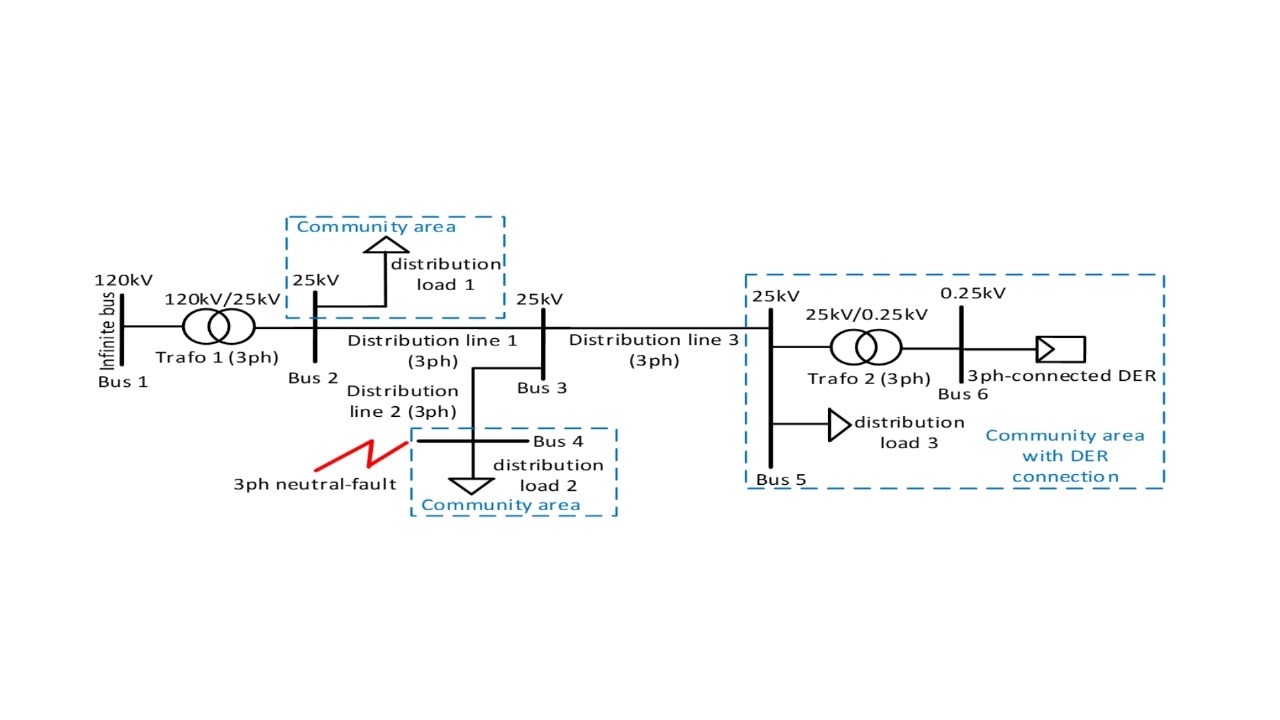ITS Professor Evaluation of Network Stability to Support Renewable Energy

Prof. Dr. Ir Sardono Sarwito MSc from the ITS Department of Shipping Systems Engineering reading his inauguration scientific oration as ITS’s 172nd professor regarding Network Stability Evaluation
ITS Campus, ITS News – Solar panels and wind turbines will produce unstable voltage when experiencing load changes. Seeing this problem, a Professor from the Institut Teknologi Sepuluh Nopember (ITS) Prof. Ir Sardono Sarwito ST MSc researched reactive power-based voltage support to overcome voltage instability in the system.
Sardono explained that several new renewable energy sources will be used more frequently as a step to reduce carbon emissions. These include solar panels and wind turbines which are distributed energy resources or Distributed Energy Resources (DER) on low-voltage networks. “The application of both will be common on ships and likewise in housing to achieve the net-zero emissions plan,” he added.
When operated, Sardono continued, drastic changes in the connected load will cause transient voltage disturbances. As a result, the unit’s network will be disconnected automatically by the installed security device. “This change in voltage will be associated with the emergence of excessive current, therefore the entire system will be disconnected via a safety device,” explained the lecturer at the ITS Department of Shipping Systems Engineering.
Single line distribution network diagram used for simulation using MATLAB and Simulink softwareNetwork conditions that frequently go out will result in losses in the electricity generation process. For this reason, reactive power-based support for low-voltage networks is one solution. “It’s not the same as a diesel generator, in this case, additional supply is needed to overcome short-term voltage drops or voltage sags that occur in the network,” added the father of two children.
The doctoral graduate at the ITS Department of Marine Engineering said that this reactive voltage injection will increase the resultant total voltage in the network. This will keep the voltage at the DER connection within the safe limits of the circuit. “In the 100 milliseconds, support voltage must be provided immediately so that it does not touch the minimum voltage limit that must be present in the circuit,” he said.

The principle of increasing the resultant voltage on a DER by adding reactive power to the circuit
Analysis was also carried out to evaluate the DER response to reactive power on the network. By using MATLAB and Simulink software, observations can be made to see whether the network can still be connected when a voltage sag occurs when a reactive power injection is given.
Through research outlined in his inauguration scientific oration as ITS’s 172nd professor, Sardono assessed that this solution is an economical method for ensuring the stability of electricity flow in the system. One factor is that the required reactive voltage source can be found in the equipment components themselves. “The capacitors in the DER can be the source, but further research is needed to present a system that can facilitate this,” he explained.

Prof. Dr. Ir Sardono Sarwito MSc (right) when he was inaugurated as ITS’s 172nd professor
This man who was born in Solo hopes that the research he has carried out can inspire students and continue to develop research in this field. “Hopefully it can light the hands of students to be able to meet the challenge of applying renewable energy sources to achieve net-zero emissions,” he concluded hopefully. (ITS Public Relations)
Reporter: Ricardo Hokky Wibisono
Related News
-
ITS Graduate Earns Three Degrees at the Age of 21
ITS Campus, ITS News — Another proud achievement has been made by a graduate of Institut Teknologi Sepuluh Nopember
November 17, 2023 17:11 -
ITS and East Java Education Office Collaborate to Improve Teachers’ Welfare
ITS Campus, ITS News — The welfare of educators, particularly honorary teachers in East Java, still requires serious attention.
November 17, 2023 17:11 -
ITS Gold Medals Surge in Gemastik XVII 2024
ITS Campus, ITS News – Demonstrating its growing excellence in the field of information technology, Institut Teknologi Sepuluh Nopember
November 17, 2023 17:11 -
PT PAL Indonesia Encouraged ITS to Collaborate Toward Indonesia Emas 2045
ITS Campus, ITS News — PT PAL Indonesia (an Indonesian naval engineering company) invites Institut Teknologi Sepuluh Nopember (ITS) to
November 17, 2023 17:11

